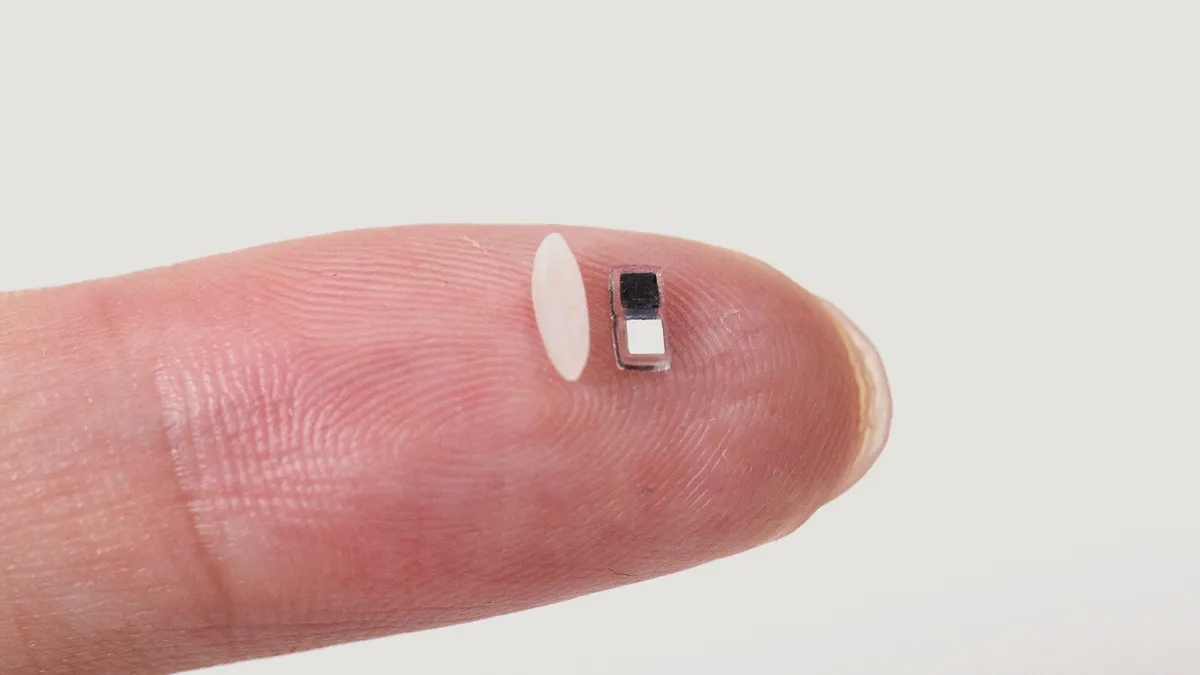
Engineers at Northwestern University have made a groundbreaking advancement in medical technology by creating a highly advanced, ultra-miniature pacemaker. This innovative device is designed to be injected via a syringe and is capable of dissolving harmlessly after use. The new pacemaker is particularly beneficial for infants suffering from congenital heart defects, providing a less invasive alternative when traditional pacemakers are necessary.
This remarkable device is smaller than a grain of rice and can be paired with a soft, flexible, wireless wearable that attaches to the patient's chest. The thermostatic device continuously monitors the individual's heartbeat. In the event of an irregular heartbeat, it emits a light pulse that penetrates the skin, activating the pacemaker. According to John A. Rogers, a bioelectronics pioneer at Northwestern and the lead developer of the device, “We have developed what is, to our knowledge, the world’s smallest pacemaker.”
Study co-lead Igor Efimov emphasized the motivation behind this project, stating, “About 1% of children are born with congenital heart defects — regardless of whether they live in a low-resource or high-resource country.” The good news is that these children often require only temporary pacing after surgery. With this tiny pacemaker, medical professionals can stimulate a child’s heart without the need for additional surgeries to remove the device.
One of the most significant challenges faced by the research team was the power supply for the pacemaker. They successfully redesigned the near-field communication-activated antenna system to a light-activated system, greatly enhancing the device's effectiveness while reducing its size. Instead of relying on a traditional battery, this innovative pacemaker functions as a small galvanic cell that generates electrical pulses using two different metal electrodes and the body’s biofluids.
Rogers explained, “When the pacemaker is implanted into the body, the surrounding biofluids act as the conducting electrolyte that electrically joins those two metal pads to form the battery.” A tiny light-activated switch allows the device to transition from an ‘off’ state to an ‘on’ state when light passes through the skin from the attached patch.
The pacemaker utilizes infrared light, which penetrates deeply and safely into the body. When the wearable detects a dangerously low heart rate, it automatically triggers an LED to flash at a normal rhythm, activating the pacemaker as needed. “The heart requires a tiny amount of electrical stimulation,” Rogers stated. “By minimizing the size, we dramatically simplify the implantation procedures, reduce trauma and risk to the patient, and, with the dissolvable nature of the device, we eliminate any need for secondary surgical extraction procedures.”
Due to the small size of these pacemakers, doctors can implant multiple devices in various locations around the heart and activate them separately using different colored lights. This capability may enable the treatment of diverse heart rhythms, including arrhythmias. Furthermore, this advanced technology holds potential applications in bioelectronics medicine, such as accelerating healing in nerves and bones, treating wounds, or blocking pain.
The findings from this groundbreaking research have been published in the prestigious journal Nature, marking a significant step forward in the field of cardiac care and bioelectronic innovations.